20 Galaxy Facts | How many types of galaxy are there?
As their simplest, a galaxy is just a large amount of gas and dust combined with dark matter and a whole lot of stars, all grouped together within a (relatively) small area. With an estimation of potentially trillions of galaxies in the observable universe, it’s no wonder that many people find them fascinating.
If you’re trying to learn some new facts about the different galaxies, then you’re in luck. There is a lot to learn about them, and there are many in the night sky all unique from one another. Let’s learn some new facts about galaxies.
- The first person to identify galaxies was Edwin Hubble, the American astronomer. He created the Hubble Sequence in 1926, which is still used today (although it has been adapted).
- However, Edwin Hubble was not the first person to see galaxies. There are records of French astronomer Charles Messier describing galaxies back in the 17th Century, although he did’t really know what they were.
- There are many different galaxies in our universe. The most well known are our galaxy, the Milky Way, and the Andromeda galaxy.
- The Andromeda galaxy is the closest galaxy to our own galaxy, being around 2.5 million light years away.
- We refer to the four different types of galaxy as the spiral galaxy, the barred spiral galaxy, the elliptical galaxy and the irregular galaxy.
- Spiral galaxies make up the vast majority of all the galaxies we can see in the sky – more than 75% of all galaxies we can see are spirals.
- Recently we discovered that there are larger galaxies than we first thought. Some of these galaxies spin at speeds of more than 1.2 million miles per hour.
- The largest type of galaxies in our universe are ellipticals, or giant ellipticals. They can contain more than a trillion stars.
- In comparison to this, the smallest galaxies in our universe are – you guessed it – also forms of elliptical galaxy.
- When PGC 1000714 was discovered in 2017, it became the first of the rarest type of galaxy, the double-ringed elliptical.
For most people, they just think of the Milky Way as a galaxy and that’s it. However, all of the galaxies that we can see in our night sky can actually be classified from each other based on their appearance.
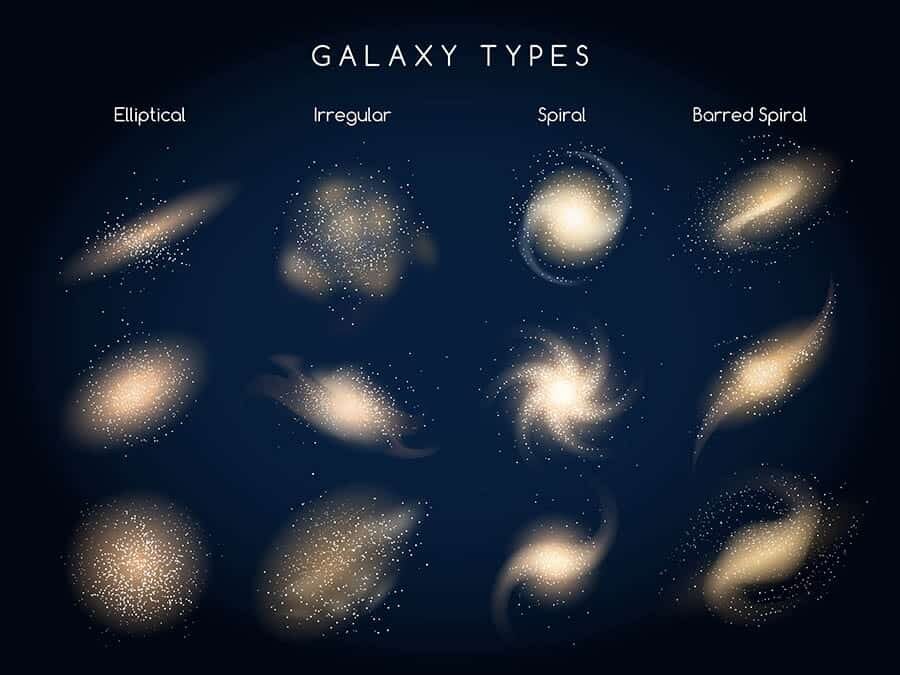
When we’re talking about how many different types of galaxies there are, we generally separate these into four different categories. These are;
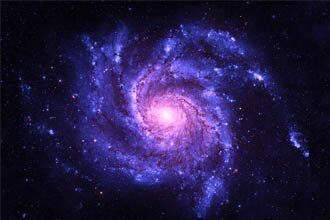
The most common galaxy in our night sky is called the Spiral Galaxy. It is pretty obvious where it gets it’s name from, considering its appearance! The spiral arms are a dead giveaway for this type of galaxy.
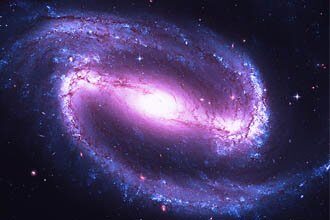
A barred spiral galaxy is well, as it sounds! It’s a spiral galaxy with a bar of stars at its center, which shows that it’s older than a regular spiral galaxy. The star formation at the center of the galaxy is the easiest way to identify a barred spiral.
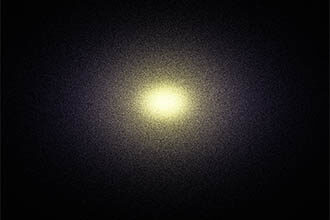
Another rare form of galaxy is called the elliptical galaxy, with the name clearly taken from it’s circular shape. They make up the largest and smallest galaxies in the sky.
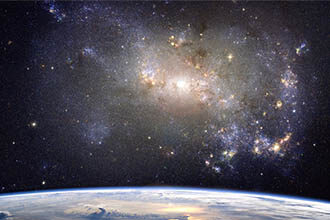
When a galaxy doesn’t fit into a certain shape, then we classify it as an irregular galaxy. These are typically small, young galaxies that are very bright.
- The oldest galaxy in our universe was discovered in 2020. It is called the Wolfe Disk, as was formed more than 12 billion years ago.
- Galaxies can vary greatly in size. They are generally between 3,000 to 300,000 light years in diameter.
- Although now it seems like we know a lot about galaxies, we actually discovered them quite late in comparison to the planets. It wasn’t until the 20th Century that we knew about any other galaxy except the Milky Way.
- The first galaxy that we knew about was obviously our own galaxy. This was first discovered by Galileo Galilei, all the way back in 1610.
- Our galaxy and the Andromeda galaxy are the two largest galaxies in our Local Group of galaxies.
- It is said that in around 4.5 billion years that our galaxy will collide with Andromeda and form a new, larger galaxies combined of the two.
- Although astronomers aren’t sure how many galaxies there are in our universe, recent estimations say that there are probably more than 2 trillion.
- The word galaxy actually comes from the Greek word galaxias, which literally means “Milky”.
- Although in comparison to us the distance between galaxies is great, in comparison to their size, many galaxies are actually very close to each other, and often form large clusters.
- The formation of galaxies is still up for debate amongst astronomers. However, many people think that galaxies formed along with the Big Bang 13.7 billion years ago.
If you’re looking to learn about specific galaxies, then there are some galaxies that are more well known to astronomers that others. The more that we know about a galaxy, the more we understand how they work. Here are a few of the best known galaxies in our universe.
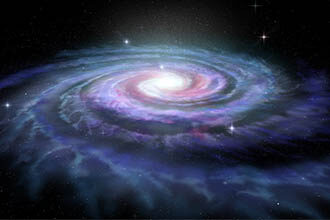
The galaxy that we’re in is called the Milky Way. It is the second largest galaxy in our local group of of galaxies.
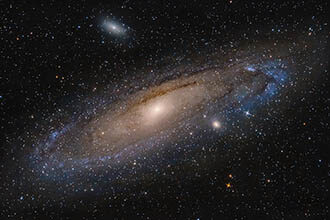
More than double the size of our Milky Way, the Andromeda galaxy is the largest in the Local Group of galaxies.
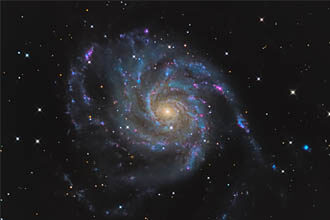
The Pinwheel galaxy is one of the most attractive galaxies to look at, as it is a true face-on spiral galaxy.
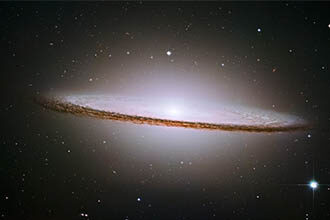
The Sombrero galaxy is one of the smaller galaxies amongst the well known. It gets it’s name from it’s sombrero-like appearance.
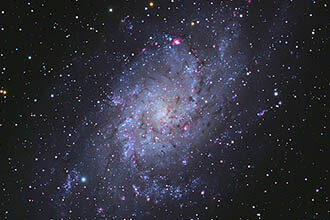
The Triangulum galaxy is one of the galaxies that is closest to us. It’s located to the right of the constellation Triangulum.
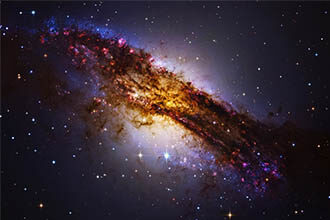
Although not one of the largest galaxies, it is a similar size to our Milky Way and it’s large enough to have several satellite galaxies.
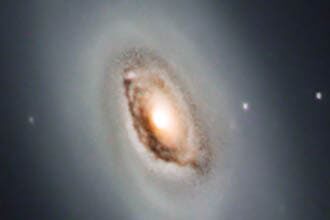
The Black Eye galaxy, also known as the Evil Eye galaxy, is one of the most unique. It’s large band of dust created an eye-like appearance.
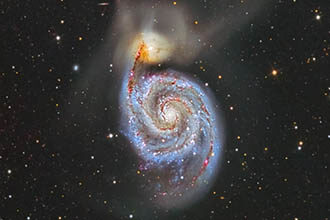
The Whirlpool galaxy is the perfect example of a spiral galaxy. It is located within close proximity of the Sunflower galaxy, too.
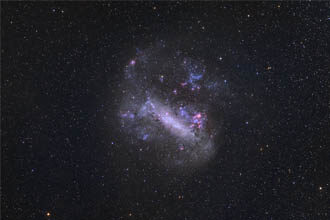
The Magellanic clouds are some of the closest galaxies to the Milky Way. They’re best seen from the Southern hemisphere.
A galaxy is defined as a collection of dust and gas, along with the trillions of stars out there and the planets that orbit them. This might not sound like a lot, but when you think of all we know about our own solar system – 8 planets, hundreds of moons and hundreds of thousands or even millions of different objects. Then imagine that there may even be billions of different solar systems within a galaxy, and this shows just how big and what a galaxy can consist of.
It was thought until recently that there was an estimated 100-200 billion galaxies out there in the universe. However, research from 2016 says that there are actually far more than this, with astronomers saying that there is probably more than 2 trillion galaxies within our universe.
If you didn’t already know, we live in the Milky Way galaxy, which is a barred spiral galaxy. How do we know that it is a barred spiral galaxy? Well, this is based on our observations of other galaxies, and then looking at what our galaxy consists of. We can see the dust and color of our galaxy, and the velocity of our stars, which is the same as other barrel spirals.
Many people wonder whether galaxies are just the result of past collisions and mergers, and whether there are no more galaxies being formed. The answer is that galaxies are still being formed, which says that our universe is still forming.
One consideration for many people is the upcoming collision between the Milky Way and the Andromeda galaxy. Astronomers estimate that they will collide in the future. So yes, galaxies can provide. In fact, many astronomers think that elliptical galaxies might actually be the result of collisions between spiral galaxies, which explains their large size potential.
The galaxy that we live in is interesting enough, but when you think about there being the possibility of there being trillions more out there in the universe, it does make you wonder what else is going on out there. And this is before even contemplating the thought that there might be more than one universe too – it can all be a little overwhelming! Anyway, hopefully you’ve learned something new about galaxies.